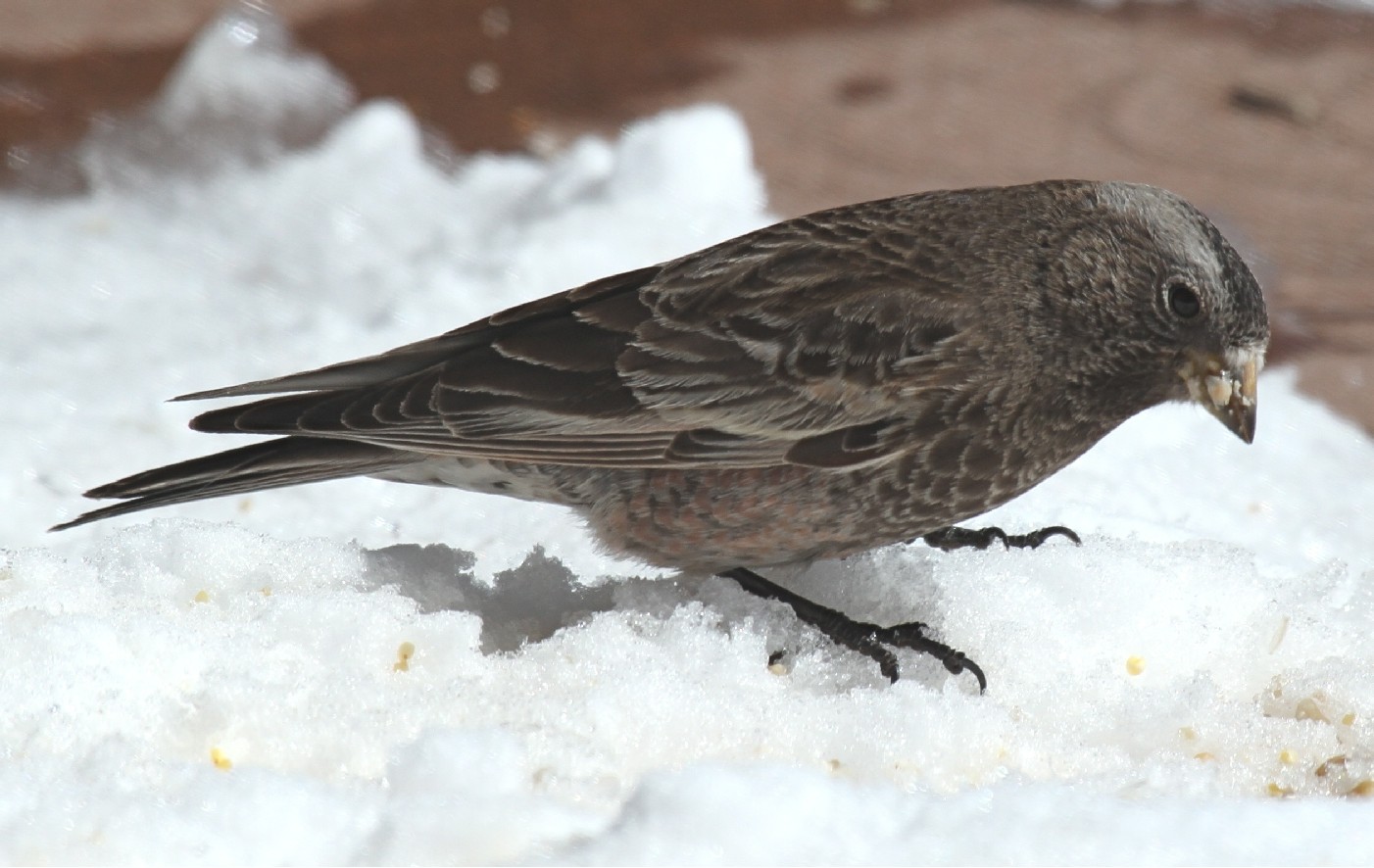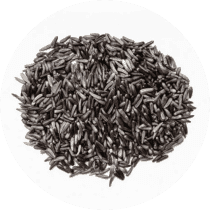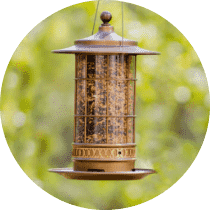Black Rosy-finch
A species of Rosy-finches and Asian Mountain-finches Scientific name : Leucosticte atrata Genus : Rosy-finches and Asian Mountain-finches
Black Rosy-finch, A species of Rosy-finches and Asian Mountain-finches
Botanical name: Leucosticte atrata
Genus: Rosy-finches and Asian Mountain-finches
Content
Description People often ask General Info
 Photo By TonyCastro , used under CC-BY-SA-4.0 /Cropped and compressed from original
Photo By TonyCastro , used under CC-BY-SA-4.0 /Cropped and compressed from original Description
Adults are black on the head, back and breast with pink on the belly, rump and wings. There is a patch of grey at the back of the head. They have short black legs and a long forked tail. The grey-crowned rosy finch has a brown body instead of black and the brown-capped rosy finch and lacks the grey patch on the back of the head. 
Size
15 cm (6 in)
Colors
Brown
Black
Gray
Pink
Life Expectancy
8.6 years
Nest Placement
Ground
Clutch Size
3 - 6 eggs
Incubation Period
1 brood
Number of Broods
11 - 14 days
Nestling Period
20 days
Feeding Habits
Black Rosy-finch's diet includes seeds and insects during the breeding season, switching to mainly seeds in winter. They forage at snow margins, windswept areas, and occasionally downslope at roadsides, feeders, and animal feed sources when weather drives them from higher elevations.
Habitat
Black Rosy-finch thrive in North America's high-altitude mountainous regions, preferring harsh alpine terrains above the tree line with limited vegetation. These birds adapt to colder climates and rugged landscapes like steep cliffs for nesting. During winter months, they descend to open valleys and parks for foraging, and seek shelter in caves and mineshafts when conditions turn severe.
Nest Behavior
Black Rosy-finch's female selects the nest site and constructs the nest. Nest building, egg-laying timing, and parental care specifics are not provided, but such information generally includes incubation duties and feeding of the young by both parents.
Nest Characteristics
The nest of black Rosy-finch is typically located in sheltered spots on cliffs or rock slides, often beneath overhanging rocks or within crevices. The base is made of moss, with a bulky cup-shaped structure woven from grasses and stems, lined with fine grass, hair, and sometimes feathers.
Dite type
Granivorous
People often ask
General Info
Feeding Habits
Bird food type

Black Oil Sunflower Seeds

Hulled Sunflower Seeds

Nyjer
Bird Feeder Type

Large Tube Feeder

Small Tube Feeder

Large Hopper

Small Hopper
Behavior
Black Rosy-finch engage in a mix of walking and hopping on the ground, coupled with an undulating flight comprising swift wingbeats and glides, characteristic of finches. These birds are socially monogamous, with the males vigilantly guarding their mates rather than a fixed territory. The courtship display involves the male tipping forward with nesting material in his beak. Black Rosy-finch are gregarious, particularly in the winter when they join large mixed-species flocks, occasionally showing aggression through displays of open-mouthed, feather-fluffed intimidation toward flock mates.
Distribution Area
The black rosy finch's breeding habitat is mountain areas above the tree-line, amongst alpine rocks and cliffs. Because of this it is one of the least studied birds in North America. Its distribution range is between that of the grey-crowned rosy finch (L. tephrocotis), which is located to north and west, and the brown-capped rosy finch (L. australis), which is located to the south and east. 
Species Status
ENDANGERED. Population most recently estimated at 10,000–20,000 mature individuals, and is declining.